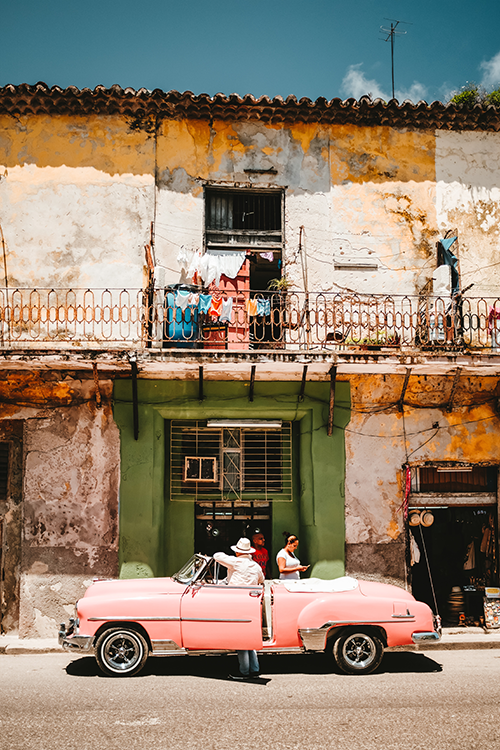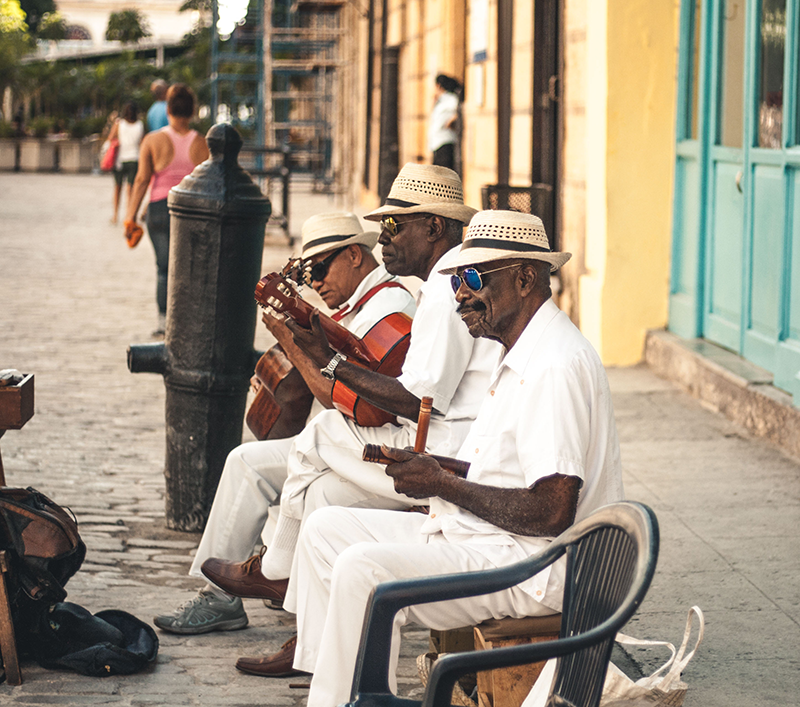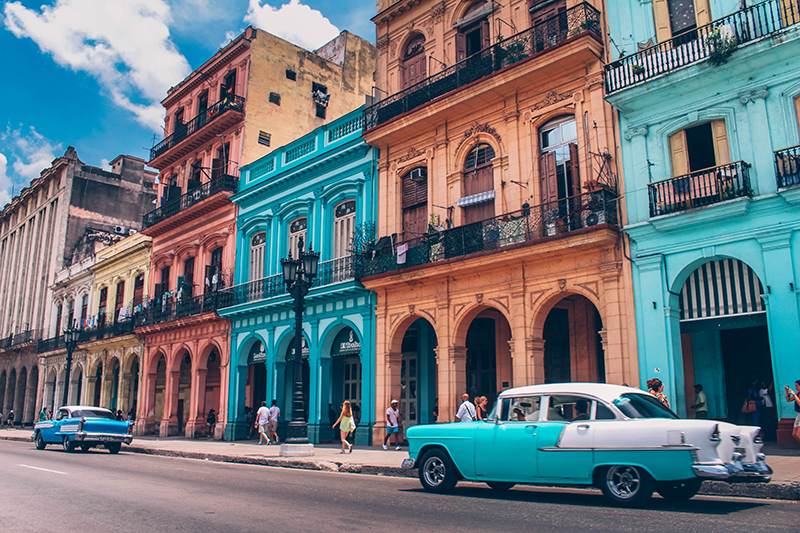Experience the best of Cuba’s beaches, cigars and ‘50s cars!
If I had to give one piece of advice to anyone travelling to Cuba, it would be to go in with an open mind.
Cuba wasn’t what I was expecting, but that’s probably because I didn’t know enough to have expectations. But to me, Cuba was even better.
Trapped in a time-warp, Cuba is an endlessly fascinating place with breathtaking beaches, classic cars, faded colonial buildings, people who dance the salsa and mambo, hand-rolled cigars and yes, the rum does exist. Cuba’s colonial cities are some of the best-preserved; from the remarkable restored grandeur of Old Havana to the rugged realism of Trinidad and tiny Baracoa, one of the oldest colonial cities in the Americas.


Step back in time amongst the bewitching cities, towns and tobacco fields of Cuba
Cuba is one of the hottest travel destinations around and it is easy to see why. The country has a unique and colourful history that still dominates most aspects of Cuban life. Cuba is a Latin nation but it has a feel all of its own with many interesting facets.
Cuba is the largest island in the Caribbean. It’s also the least expensive. Besides low-cost living, tourists are drawn by perfect winter weather and more than 300 white sandy beaches lapped by turquoise seas.
Havana, in all its faded glory, is just waiting to be explored. Few cities in the world can conjure up such emotions. From the expertly mixed mojitos to the traditional cuisine. Latin rhythms permeate the streets leaving your feet tapping. Practice all week and then perfect your moves in a salsa lesson with a local dance partner, a farewell night out to remember in vibrant Havana!
Further on is the Vinales region, well known for its tobacco growing and cigar factories.
On the south of the island is colonial Trinidad, where we can wander the cobblestone streets and listen to Cuban rhythms in the Casa de La Trova.
Highlights
HAVANA
Explore Cuba’s unique historic capital with its faded colonial grandeur, including the Plaza de la Cathedral, the impressive Museum of the Revolution and the Havana Club Rum Museum where there may be the chance to sample the different rums.
CUBAN CIGAR
Pinar Del Rio province is known throughout the world as Cuba’s main tobacco growing region.
TRINIDAD
Trinidad is a UNESCO Heritage Site and one of the best-preserved colonial cities in the world.
CIENFUEGOS
Cienfuegos is known as the ‘Pearl of the South’ due to its large boulevards, fascinating buildings and spectacular views over the bay. Admire the neoclassical structures and colonial theatre.
VARADERO
Varadero is a famous beach resort, only a two hour drive from Havana, with soft sandy beaches and turquoise waters.
CHE GUEVARA
Santa Clara is where you will visit the mausoleum and museum dedicated to the extraordinary life of Ernesto “Che” Guevara.
When to go?
The months from January to May are an ideal time to visit Cuba, when the temperatures are warm, the country is uncrowded by tourists and there is no threat of hurricanes, which can visit the coasts from June to November.
Currency
Cuban peso (CUP) is the local currency. Credit cards and travellers’ cheques are not widely accepted and ATMs are few and far between, so Tim recommends you take euros. You can also use British pounds or Canadian dollars, but US dollars can incur a 10 per cent exchange fee.
Language
The national language is Spanish. Cubans have had little access to the outside world for the past 50 years and outside the main tourist areas, Spanish is almost exclusively spoken. If your Spanish is non-existent, grab a phrase book and practise a few key phrases on the long flight over.
Visas and passports
The first thing you need is a tourist visa, which is a simple affair as long as you allow time. Seven to 10 days should be enough.
Geography & environment
The Cuban archipelago sits in the sweet spot between the Caribbean and the Gulf of Mexico. It enjoys a tropical climate cooled by ocean winds, and miles of idyllic coast. The main island of Cuba is covered by fertile plains, hills and a mountain range in the south. Cuba is largely an agricultural state, so sugar cane and tobacco fields dominate the landscape, and about a fifth of the main island is a national park. Animal life in Cuba includes the smallest frog in the world (10mm), the tarantula and tropical fish that live in the coral reefs of the coast.
Cuba has a population of 11.4 million. Havana, the capital city has a population of 2.2 million.
Local culture
Modern day Cubans are a unique mix of European and African descendants – and their culture is truly distinct as a result. The influence of communism has led to a nation that appreciates the simple things in life, lacking some creature comforts perhaps, but rich in cultural vitality. Cuba is praised worldwide for its high ranking of human development. Education and the arts thrive, and Cuba has a high ratio of medical doctors. Havana is Cuba’s arts capital and home to the country’s most innovative theatre, film, music and literature.
Food & drink
Cuba travel is not just about the sights and the fun, it’s about the local cuisine, an exotic treat of Spanish and Caribbean influences. A typical meal consists of rice, black beans and tender saucy meat. Ropa Veija is one of these dishes, and consists of shredded steak steeped in tomato sauce, and sides of fried plantain and yuca chips. Other classics include malango fritters and Cubano sandwiches stuffed with ham, cheese and pickles. Polish your dish off with some locally brewed beer and rum, or a mango dessert.
Shopping
Coffee, rum and Cuban cigars – the famous trio of Cuban exports. In the country itself, these things can be bought for a fraction of the price. Cuban cigars are world-class in quality, Cuban rum lives up to its reputation and Cuban coffee is renowned for its organic and flavoursome qualities. Lovers of traditional arts and crafts will find Cuban markets to be a treasure-trove of handmade goods from pottery to baskets and woodcarvings. There’s also a thriving second-hand culture with market stalls selling vintage art, clothes and memorabilia from Cuba’s rich past.
Tipping
Tipping isn’t common practice in Cuba, but due to the low wages of the locals, you may like to leave a few extra pesos to express your gratitude for the service.
Health
Kiwis travelling to Cuba are required by local law to have a valid travel insurance policy — including medical cover — before they enter the country.


